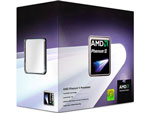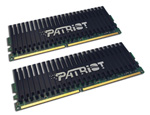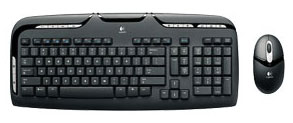AMD HTPC
Everyone asks for HTPC component recommendations, but those potential HTPC buyers seem almost impossible to please. Perhaps this is because the HTPC, more than any other computer class, is a very personal machine. It needs to meet the specific needs and demands of the end users, who vary widely in what they plan to do with their new HTPC.
So let's first talk about our build concept for these two HTPC configurations, which remain very similar to the recommendations in our last entry guide. We are assuming the user already has the HDTV or monitor he plans to feed, along with a sound system for that HDTV. The motherboards we recommend can reasonably feed audio signals for your Blu-ray movies, but they are not integrated audio amplifiers. Since most end-users are on cable or satellite for TV, we will not include any TV tuner recommendations. In other words, our HTPC recommendation is a "white box" recommendation. We do understand that some users want more detail and more options in our HTPC recommendations so we plan to do an expanded HTPC Buyers' Guide in the future.
Of the many possible uses for an HTPC, the majority of end-users store, play, and stream movies with their HTPCs. Thus, that is where we have concentrated our recommendations. In general, the processing power in both systems has increased since our December 2008 guide, but as performance increases costs have fortunately continued to drop. This is particularly true in our new case recommendation from Antec, which provides a "component look" case and silent 80 Plus certified 380W power supply for $120.
| AMD HTPC System | ||
| Hardware | Component | Price |
| Processor | AMD Phenom II X3 710 Deneb (Tri-core 2.6GHz, 45nm, 3x512KB L2, 6MB Shared L3) |
$119 |
| Cooling | CPU Retail HSF | - |
| Video | On-Board | - |
| Motherboard | ASUS M3N78-EM GF8300 Micro ATX | $90 |
| Memory | Patriot Viper Model PVS24G6400LLK 4GB DDR2-800 4-4-4 ($52 less $25 Rebate) |
$27 |
| Hard Drive | WD Caviar Green WD10EACS 1TB 32MB cache - OEM | $90 |
| Optical Drive | LG BD/HD DVD / 16x DVD+/- RW GGC-H20L - Retail | $110 |
| Audio | On-Board | - |
| Case | Antec NSK2480 Black/Silver Micro ATX Case Includes 80 Plus Certified 380W PSU |
$120 |
| Power Supply | Earthwatts 380W Included with Case | - |
| Base System Total | $555 | |
| Input | Logitech Cordless Desktop EX110 USB RF Wireless Keyboard and Optical Mouse |
$30 |
| Operating System | Microsoft Vista Home Premium SP1 (for System Builders) | $99 |
| Complete System Bottom Line | $685 | |
 |
The CPU chosen for the AMD HTPC is the tri-core Phenom II X3 710 with 6MB of shared L3 cache. You get the expanded processing power of the Phenom II, which is always useful in an HTPC, at the same price as the older Phenom CPU chosen in the last HTPC guide. The three cores each run at 2.6GHz, each has a 512KB L2 cache, and you get a shared 6MB L3 cache - the same L3 cache size shared on higher end quad-core Phenom II processors. We hesitate to call a Phenom II X3 CPU a low-end chip, but this is certainly the most reasonable Phenom II you can buy. However, it has plenty of power to take your AMD HTPC anywhere you choose to go.
 |
With DDR2-800 still a reasonable option these days, we equipped the HTPC with 4GB of fast CAS4 Patriot Viper memory. We aren't interested in overclocking this HTPC (though it's technically still possible), and spending additional money on even higher performance RAM just doesn't make sense. 4GB of memory, however, does make perfect sense in an HTPC box.
 |
The $90 ASUS M3N78-EM is based on the NVIDIA GeForce 8300 chipset. The board features one PCI-E x16 slot, one PCI-E x1 slot, two PCI slots, 8GB memory support, NVIDIA Gigabit LAN, 7.1 HD audio, 12 USB ports, five 3Gb/s SATA ports with RAID support, IEEE 1394a, one eSATA port, HDMI/DVI/VGA output, and full support for Phenom 140W processors. This board offers overclocking capabilities along with being a top-notch HTPC board. We highly recommend the GF8200/8300 series for the HTPC market due to hardware accelerated Blu-ray playback, multi-channel LPCM output, and very good application performance.
 |
As we discussed in the HTPC introduction we did not include a TV tuner in the configuration since most end users are now distributing their cable and satellite feeds. Few users, therefore, have any real need for a TV tuner card. If you truly need a Digital TV tuner, one interesting option on the TV tuner side is the HD HomeRun from Silicondust USA. This dual HDTV tuner/recorder functions over a network and provides ATSC/QAM support. The price of $159 is more than many other options, but this is arguably a more flexible overall solution - particularly with the mandated move to digital from analog.
What's the point of having an HTPC if you don't have a lot of storage space? To that end, we selected a newly affordable 1TB (1000GB) Western Digital Caviar Green WD10EACS SATA hard drive at just $90. The WD Green features an energy saving design and we found to be among the quietest drives we have ever evaluated. For an HTPC, silence is paramount, and this WD Green will not disappoint. The WD Green is a bit slower than 7200RPM 1TB drives, but the real performance difference is very minor - especially if you're only interested in HTPC duties like video storage and playback.
Seagate also makes a super-reliable 1TB drive optimized for video storage and retrieval called the Seagate SV35.3 ST31000340SV 1TB at $150. This "video" Seagate features 24x7 reliability with >1 million hours MTBF and improved read/write reliability. For those willing to pay the small premium for this drive, the "video" Seagate would be a good choice. The Seagate includes a 5-year warranty.
 |
The Optical Drive is certainly an upgrade to the entry and budget systems since a reasonable HTPC requires Blu-ray playback capabilities. The LG Blu-ray drive fits the bill without breaking the bank. It provides 6X Blu-ray playback and the fastest recording and playback of DVD and CD media. The current price is around $110, but this drive sometimes goes on sale for $100 so look out for specials.
There are also Blu-ray options from Lite-On for less than $100 and a 6X Blu-ray player at $105. We do not have much experience with this Lite-On drive, but Lite-On drives in the past have proved reliable. That would make the Lite-On 6X Blu-ray a more reasonably priced alternative where every penny counts.
 |
Our choice for the HTPC case is the Antec New Solution NSK2480 with its audio component look, and it includes an extremely flexible design for a micro ATX motherboard. The case features an Earthwatts 80 Plus 380W power supply and two side-mounted 120mm TriCool 3-speed fans. It supports two front-accessible 5.25" drives and two internal 3.5" drives. An adjustable internal baffle system lets you direct the airflow for best cooling.
If you prefer a small cube case, the Lian Li PC-V350B is a gem of a small black aluminum case. The Lian Li is also a great choice for those who prefer a cube instead of a component look.
 |
Since most will place their HTPC near their HDTV or big screen monitor, a wired keyboard and mouse are not very useful in most setups. More often, you'll want to control the PC from across the room, so we selected a wireless RF Logitech keyboard and mouse. At just $30 for the pair, the Logitech Cordless Desktop EX110 USB RF wireless package is a great value. This is also the HTPC preferred RF wireless set, which does not require "line of sight" that is needed for IR wireless.
The final price of the AMD HTPC comes to just $685. That is a bargain considering the tri-core Phenom II CPU, 4GB of memory, and 1TB hard drive, all housed in a quiet Antec HTPC case with an 80 Plus certified PSU. You can certainly spend even less on a basic HTPC box, but we doubt you can build a more powerful or quieter system for the same money.










65 Comments
View All Comments
Zak - Friday, May 15, 2009 - link
I've built a $350 (tower only) AMD PC with on-board graphics using that HEC case. It's really nice looking for the price. The front panel looks grea, well finished. And the steel is sturdy and everything inside is nicely finished. This is really a great value case.Z.
pirspilane - Thursday, May 14, 2009 - link
I installed both the NVIDIA HD Audio driver and the Realtek HD Audio driver. Do I need both? What's the difference?Also, does the LG Blu-ray drive include software for playing Blu-ray, or do I need to buy a separate app. If so, what would you recommend?
JarredWalton - Thursday, May 14, 2009 - link
I believe that the NVIDIA audio drivers are for the HDMI output. I know that's the case on ATI cards that support HDMI. So, if you want HDMI with audio you would need to install both drivers.(Feel free to make fun of me if I'm wrong, though!)
pirspilane - Wednesday, May 20, 2009 - link
You're absolutely right.A few other learning experiences I had:
- Although the M3N78 PRO has a 3-pin connector for the "PWR" fan, there doesn't seem to be any way to control the speed on that fan. It DOES control the speed on "CHA" fan.
- BIOS settings - TLB fix should be disabled; Q-fan must be enabled for the CPU fan to use the Cool n Quiet software, even if you're not using AISuite (which has the Q-fan utility). In fact, you can't use both the Cool n Quiet and AISuite utilities, so I didn't install AISuite.
nubie - Thursday, May 14, 2009 - link
I love you guys, you just built a decent Intel entry-level for $301!!If you happen to have a case/psu/HDD/optical/OS/RAM from an older build you can upgrade with the 4770 for under $300.
(for most people that is what I would recommend, you can buy an older Gateway/eMachines, with a real mATX case, for $100, thus taking care of all of the base requirements, then add the CPU/Mobo/RAM and 4770 and get a decent system out of it for under or around $500)
If you are scrounging for the money you can start with a Celeron chip for $30 and then move up as the budget allows, same with RAM, start with a single 2GB stick if you are really strapped, or a 2x1GB kit.
It is freaking insane how much is available for so little, more so than ever before. (for less than a new current-gen video game console you could upgrade your rig to play current games).
strikeback03 - Friday, May 15, 2009 - link
Would you really trust the PSU in an old emachines/gateway? Esp. if adding a 4770, which likely means using a 4pin to PCI-E power adaptor?nubie - Friday, May 15, 2009 - link
Actually, now that you mention it I have upgraded and/or built several systems with the eMachines/Gateway power supplies and have been very pleased. I have had the Celeron 430/420/440 overclocked past 3ghz on these supplies, with a voltmodded 7900GS @650mhz core clock and no issues at all, no lockups with 3Dmark runs, no issues with Prime95 stress testing.They are rated accurately, are quiet, and inexpensive.
Also, look at what you are asking of them: 1 hard drive, 1 optical drive, 1 35 watt processor. According to: http://extreme.outervision.com/PSUEngine">http://extreme.outervision.com/PSUEngine that is only 215 watts for an e5200 system with a 4830, whereas the Gateway supplies are rated to 250 watt.
If you are using a Celeron 440 with a 4770 it should be just fine, the PSU calculator says 158watts for the 440 with a 4670 (4770 is not yet a choice).
On my regular system I run a PC Power Silencer 470, and I highly recommend it if you plan to add to the system with overclocked Duals or Quads. But I wouldn't hesitate to recommend a cheap system to start with on the lower TDP processors and lighter video cards.
I figure that these older systems came with a P4 or Athlon 90nm in the first place, so a low-power single or quad on 45nm isn't going to be a problem as long as you aren't using a power hungry video card or a rack of hard drives.
barnierubble - Thursday, May 14, 2009 - link
Hi,All the links in the component lists in the latest Under $825 buyers guide have a poor rating in Web of Trust so I would not buy anything from them.
Wesley Fink - Thursday, May 14, 2009 - link
The problem is with Circle of Trust and not our links. Our link engine tries to analyze what you are seeking and route it to the lowest priced vendor it knows about. Often that is Newegg.Circle of trust misreads the forwarding as not completely trustworthy, which is not correct. Our buying links are as reliable as any you will find. They are just analyzed and routed and not direct.
aftlizard - Thursday, May 14, 2009 - link
I wouldn't, and don't. I use this which gives me much better range than my old RF mouse and keyboard, and it saves with clutter.http://www.newegg.com/Product/Product.aspx?Item=N8...">http://www.newegg.com/Product/Product.aspx?Item=N8...